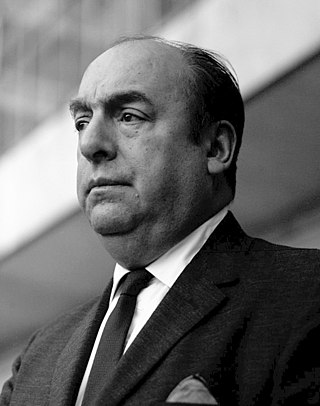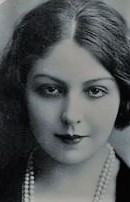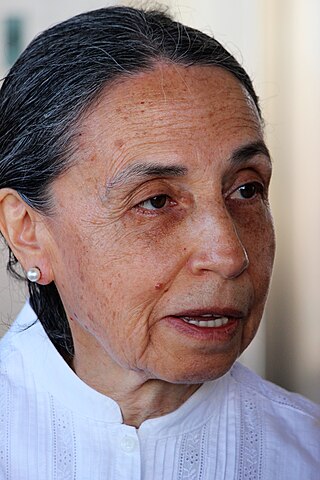Related Research Articles

Nicolás Cristóbal Guillén Batista was a Cuban poet, journalist and political activist. He is best remembered as the national poet of Cuba.

Vicente García-Huidobro Fernández was a Chilean poet born to an aristocratic family. He promoted the avant-garde literary movement in Chile and was the creator and greatest exponent of the literary movement called Creacionismo ("Creationism").
The Generation of '27 was an influential group of poets that arose in Spanish literary circles between 1923 and 1927, essentially out of a shared desire to experience and work with avant-garde forms of art and poetry. Their first formal meeting took place in Seville in 1927 to mark the 300th anniversary of the death of the baroque poet Luis de Góngora. Writers and intellectuals paid homage at the Ateneo de Sevilla, which retrospectively became the foundational act of the movement.

Rafael Alberti Merello was a Spanish poet, a member of the Generation of '27. He is considered one of the greatest literary figures of the so-called Silver Age of Spanish Literature, and he won numerous prizes and awards. He died aged 96. After the Spanish Civil War, he went into exile because of his Marxist beliefs. On his return to Spain after the death of Franco, he was named Hijo Predilecto de Andalucía in 1983 and Doctor Honoris Causa by the Universidad de Cádiz in 1985.
Latin American poetry is the poetry written by Latin American authors. Latin American poetry is often written in Spanish, but is also composed in Portuguese, Mapuche, Nahuatl, Quechua, Mazatec, Zapotec, Ladino, English, and Spanglish. The unification of Indigenous and imperial cultures produced a unique and extraordinary body of literature in this region. Later with the introduction of African slaves to the new world, African traditions greatly influenced Latin American poetry. Many great works of poetry were written in the colonial and pre-colonial time periods, but it was in the 1960s that the world began to notice the poetry of Latin America. Through the modernismo movement, and the international success of Latin American authors, poetry from this region became increasingly influential.
Latin American literature consists of the oral and written literature of Latin America in several languages, particularly in Spanish, Portuguese, and the indigenous languages of the Americas. It rose to particular prominence globally during the second half of the 20th century, largely due to the international success of the style known as magical realism. As such, the region's literature is often associated solely with this style, with the 20th century literary movement known as Latin American Boom, and with its most famous exponent, Gabriel García Márquez. Latin American literature has a rich and complex tradition of literary production that dates back many centuries.

Pablo Neruda was a Chilean poet-diplomat and politician who won the 1971 Nobel Prize in Literature. Neruda became known as a poet when he was 13 years old and wrote in a variety of styles, including surrealist poems, historical epics, political manifestos, a prose autobiography, and passionate love poems such as the ones in his collection Twenty Love Poems and a Song of Despair (1924).

Guillermo de Torre Ballesteros was a Spanish essayist, poet and literary critic, a Dadaist and member of the Generation of '27. He is also notable as the brother-in-law of the Argentine writer Jorge Luis Borges.

Pablo de Rokha was a Chilean poet. He won the Chilean Premio Nacional de Literatura in 1965 and is counted among the four greats of Chilean poetry, along with Pablo Neruda, Vicente Huidobro and Gabriela Mistral. De Rokha is considered an avant-garde poet and an influential figure in the poetry scene of his country.
Luis Rosales Camacho was a Spanish poet and essay writer member of the Generation of '36.

María Teresa León Goyri was a Spanish writer, activist and cultural ambassador. Born in Logroño, she was the niece of the Spanish feminist and writer María Goyri. She herself was married to the Spanish poet Rafael Alberti. She contributed numerous articles to the periodical Diario de Burgos and published the children's books Cuentos para soñar and La bella del mal amor.
Concepción Méndez Cuesta was a leading Spanish poet and dramatist and member of the Generation of '27 who became known in the literary world under the name Concha Mendez.

El Socialista is a socialist newspaper published in Madrid, Spain. The paper is the organ of the Spanish Socialist Workers' Party (PSOE).

The Heraldo de Madrid was a Spanish daily newspaper published from 1890 to 1939, with an evening circulation. It came to espouse a Republican leaning in its later spell.

Elvira Hernández is a Chilean poet, essayist, and literary critic.

El Mono Azul was an anti-fascist magazine which was published in Madrid during the Spanish Civil War. The magazine existed between 1936 and 1939 and was one of the major cultural, intellectual and artistic publications during the war with the subtitle hoja semanal de la Alianza de Intelectuales Antifascista para la Defensa de la Cultura.
La Gaceta Literaria was a bimonthly avant-garde literary, arts and science magazine which appeared in Madrid, Spain, between 1927 and 1932. It is known for its leading contributors and editorial board members.

Nuestro Cinema was a film magazine which was published in Spain between 1932 and 1936 with a one-year interruption. Its subtitle was Cuadernos Internacionales de Valorizacion Cinematografica. It was one of the earliest Spanish publications in its category and was the first Communist film magazine in Spain.

The Alliance of Antifascist Intellectuals for the Defense of Culture was a civil organization created on July 30, 1936, after the Spanish Civil War began. It had its initial headquarters in Madrid and moved to Valencia, accompanying the government of the Second Spanish Republic.
References
- 1 2 3 4 5 Estrella de Diego; Jaime Brihuega (Spring 1993). "Art and Politics in Spain, 1928-36". Art Journal. 52 (1): 57. doi:10.1080/00043249.1993.10791495.
- ↑ "Rafael Alberti" (in Spanish). Santa & Cole. 29 October 2021. Retrieved 12 March 2022.
- ↑ Gina Herrmann (December 2001). "Nostralgia: María Teresa León, Rafael Alberti, and the Memory of Absence". Revista Hispánica Moderna. 54 (2): 329. JSTOR 30207965.
- ↑ Silvina Schammah Gesser; Alexandra Cheveleva Dergacheva (2018). "An Engagé in Spain: Commitment and Its Downside in Rafael Alberti's Philo-Sovietism". In Raanan Rein; Joan Maria Thomàs (eds.). Spain 1936: Year Zero. Brighton: Sussex Academic Press. p. 177. ISBN 978-1845198923.
- ↑ Grant Daryl Moss (2010). Political poetry in the wake of the Second Spanish Republic: Rafael Alberti, Pablo Neruda, and Nicolás Guillén (MA thesis). Ohio State University. p. 33.
- ↑ "Rafael Alberti; Spanish Poet Was Last Survivor of 'Generation of 1927 Artists'". Los Angeles Times . 1 November 1999. Retrieved 12 March 2022.
- ↑ Salvador Jiménez-Fajardo (1985). Multiple Spaces: The Poetry of Rafael Alberti. London: Tamesis Books. p. 26. ISBN 978-0-7293-0199-2.
- ↑ Carl-Henrik Bjerstrom (2014). Re-imagining the nation: Josep Renau and the politics of culture in Republican Spain, 1931-1919 (PhD thesis). University of London. p. 58.
- ↑ Grant D. Moss (2017). Political Poetry in the Wake of the Second Spanish Republic: Rafael Alberti, Pablo Neruda, and Nicolás Guillén. Lanham, MD: Lexington Books. p. 18. ISBN 978-1-4985-4771-0.
- ↑ Lisa A. Kirschenbaum (2017). "The Russian Revolution and Spanish Communists, 1931–5". Journal of Contemporary History . 52 (4): 899. doi:10.1177/0022009417723974. S2CID 159939003.